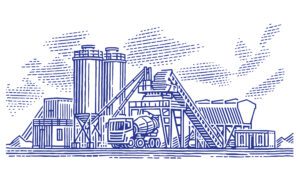How to Attract Gen Z and Millennials to Manufacturing?
In four years, Millennials will account for 75% of the total global workforce, yet they showed the lowest likelihood of selecting manufacturing as their first career choice. And on top of that, this digital savvy generation expects to be provided with technology to help them do their jobs and be more productive, and frankly, most manufacturers are not meeting their expectations.
In our latest podcast episode of “Conquering Chaos: A Show for Manufacturing Leaders,” connected work expert and podcast host, Josh Santo, chats with Jake Hall, a.k.a. “The Manufacturing Millennial,” to understand how technology is impacting this generation’s decision-making and job search in the industrial space. Their conversation dives into the benefits of automation, high tech manufacturing and steps companies can take to move toward smart factories and Industry 4.0 – and the role it all plays in attracting and retaining younger talent.
Here’s a recap of the podcast episode.
What Are Millennials and Gen Z Looking for When Job Hunting?
Traditionally, when younger generations think of manufacturing, they think of a dirty, loud factory with cars going down assembly lines. In their minds, there’s smoke, the factory is dark, the lights are flickering. That’s not what manufacturing is. There’s so much more going on behind the scenes than most people realize.
For manufacturers looking to capture the attention of younger talent, it’s critical to help them understand that the industry is not just about assembly lines, robots and welding. There’s the Internet of things (IoT), additive manufacturing, 3D printing, data monitoring, blockchain and more. Much of the world’s most cutting-edge technology is used in manufacturing, and bringing awareness to that is key.
When you think about it, some of the most prestigious companies to work for, such as SpaceX, are technically manufacturers. The pandemic has brought our attention to companies like Pfizer and Johnson & Johnson – pharmaceutical companies that rely a great deal on manufacturing. The industry is becoming part of everyday conversations, and that will only impact talent acquisition for the better in the long run.
How New Technology Can Attract Younger Generations to Manufacturing?
Of course, simply talking about the industry’s use of technology is one thing, but actually implementing solutions is another. According to Hall, the industrial equipment on the factory floor is on average 22 years old. Most people don’t have a car that old, they definitely don’t have a cell phone that old, and might not even live in a house or an apartment that old. Yet, they’re using manufacturing equipment that hasn’t changed in decades. On top of that, it’s still common to find paper-based procedures, checklists and data being manually captured by hand and recorded on paper. But today’s modern electronic tools are the answer to help bridge the gap.
Manufacturers need to figure out how to take their tried-and-true manufacturing operating processes and weave new technology into them.
There are ways to take an old product and modernize it or change the way a process is carried out to make it more attractive to the next generation.
It’s as simple as taking a paper-based procedure or checklist and recreating it in a mobile, digital format – improving operational efficiency and visibility.
Forward-thinking manufacturers are leveraging new technology to improve manufacturing operations. They’ve already started implementing technology to take advantage of IoT, Industry 4.0, and other ideas that have been talked about for years but haven’t necessarily made sense from a cost or resource perspective.
Additive manufacturing, for example, has moved beyond hobby machines that cost $5,000 to print small plastic parts to full-blown 3D-printed titanium for brake caliper housings. Hall describes how “literally, rockets that are going to go to space are being 3D printed instead of having subtractive manufacturing done to it.”
The key takeaway is that companies that are not willing to implement new technology or evolve their processes risk becoming irrelevant in the coming years – or worse, risk not being able to hire or keep the workers that keep their factories afloat.
For more insight on how to attract and retain the younger generation of Gen Z and Millennial workers, listen to the full podcast episode.






